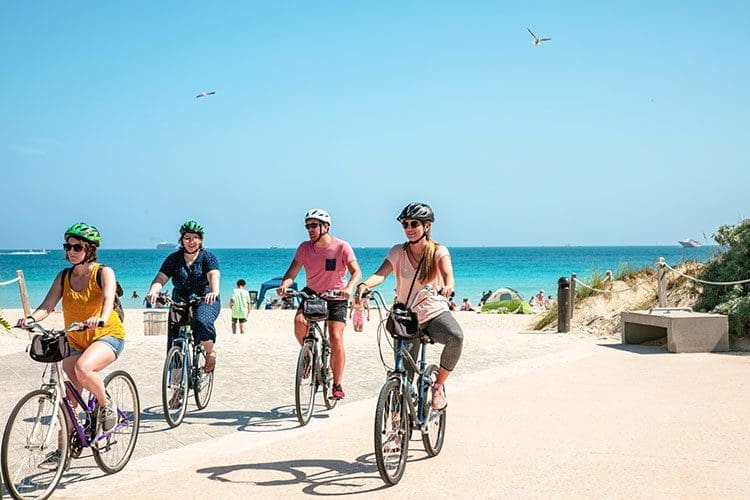As the summer season arrives, many cycling enthusiasts take to the highways, enjoying the warm weather and picturesque views. However, it’s essential to prioritize safety when cycling on the highway, where sharing the road with vehicles poses unique challenges. By following these ten essential tips, you can ensure a safe and enjoyable experience while pedaling your way through scenic routes. In case of accidents, it is crucial to seek professional advice from personal injury lawyers who specialize in bicycle accidents to protect your rights and seek appropriate compensation.
Cycling offers a wonderful opportunity to stay active, soak up the sunshine, and connect with nature. Whether you’re a seasoned cyclist or just beginning your journey, these tips will help you navigate the highways confidently and minimize potential risks. By incorporating safety measures into your cycling routine, you can focus on enjoying the freedom of the open road while maintaining peace of mind.
- Wear a Helmet and Reflective Gear: Always wear a properly fitting helmet to protect your head in case of a fall or collision. A helmet can significantly reduce the risk of head injuries and save lives. Choose a helmet that meets safety standards and ensure it fits snugly on your head, with the straps properly adjusted.
Additionally, consider investing in reflective vests, jackets, or bands that can be easily seen by motorists, even from a distance. These reflective materials help ensure that drivers can spot you, particularly during low-light conditions or when visibility is compromised. If reflective gear is not an option for you, opt for brightly colored clothing that stands out against the surrounding environment.
- Familiarize Yourself with Traffic Laws: Understanding and following traffic laws applicable to cyclists is vital for your safety and the smooth interaction with motorists. Familiarize yourself with local cycling regulations and road rules specific to your area. These may include how to navigate intersections, when and how to yield to pedestrians or vehicles, and where you are legally allowed to ride.
Obey traffic signals, stop signs, and lane markings just as you would if you were driving a car. Signal your turns using clear hand signals, giving motorists ample time to anticipate your movements. By adhering to traffic laws, you enhance your safety and gain the respect and cooperation of other road users.
- Choose the Right Route: Planning your cycling route carefully is crucial, particularly when riding on the highway. Opt for roads with designated bike lanes or wide shoulders, which provide an added layer of protection between you and passing vehicles. These dedicated spaces offer a safer buffer zone and reduce the risk of potential collisions.
Utilize online maps, cycling apps, or local cycling resources to find the most bicycle-friendly routes. These tools often highlight bike lanes, paths, or low-traffic roads that are more suitable for cycling. Consider factors such as traffic volume, road conditions, and the overall suitability of the route for cycling. Prioritize roads with slower traffic, lower speed limits, and minimal heavy truck or commercial vehicle presence.
- Stay Visible: Enhancing your visibility as a cyclist is essential for your safety on the highway. Utilize front and rear bike lights to make yourself more noticeable to motorists, especially during dawn, dusk, or nighttime rides. Opt for lights with a steady or flashing mode to attract attention effectively. Ensure your lights are fully charged or equipped with fresh batteries before each ride.
- Maintain a Predictable Riding Style: Consistency and predictability are key when cycling on the highway. Ride in a straight line and avoid sudden swerving or erratic movements. This helps motorists anticipate your actions and ensures a smoother and safer interaction on the road.
Maintain a consistent speed that aligns with the flow of traffic. Riding too fast or too slow can increase the chances of collisions. However, be cautious of your speed and avoid going significantly faster than the surrounding vehicles. Adjust your pace to match the traffic flow, maintaining a safe distance from the vehicle in front of you. Adhering to a predictable riding style ensures that you are more easily noticed and anticipated by drivers.
- Be Alert and Avoid Distractions: Maintaining attentiveness and minimizing distractions is vital for your safety on the highway. Keep your focus on the road ahead and be aware of your surroundings at all times. Avoid distractions such as using your phone, listening to music with headphones, or engaging in other activities that may divert your attention from the road.
Keep both hands on the handlebars, ready to brake or maneuver if needed. Scan the road ahead for potential hazards, such as potholes, debris, or approaching vehicles. Continuously monitor the behavior of surrounding traffic to anticipate any changes or potential risks.
- Follow Proper Lane Positioning: When riding on the highway, position yourself far enough to the right to allow vehicles to pass safely. However, maintain a safe distance from parked cars to avoid collisions caused by opening doors. Stay visible by avoiding riding too close to the curb or in blind spots of larger vehicles.
- Stay Mindful of Traffic Flow: Be mindful of the flow of traffic and adjust your speed accordingly. Riding too fast or too slow can increase the risk of accidents. Aim to ride with the flow of traffic, not against it, and keep a safe distance from vehicles in front of you. Observe the speed limits and adjust your speed when necessary.
- Anticipate and Respond to Hazards: Constantly scan the road ahead for potential hazards. Watch out for road conditions such as potholes, gravel, or debris and adjust your speed and position to navigate them safely. Be cautious of vehicle blind spots, especially when approaching intersections or merging lanes. Be prepared to brake or take evasive action if necessary.
- Know When to Seek Legal Assistance: Despite your best efforts, accidents can still occur. If you’ve been involved in a cycling accident on the highway and have sustained injuries, it is crucial to seek professional advice from experienced personal injury lawyers who specialize in bicycle accidents. They can guide you through the legal process, protect your rights
By following these ten essential tips, you can enjoy your summer cycling adventures on the highway while prioritizing your safety. Remember, being proactive and cautious on the road is key to a smooth and enjoyable cycling experience.
Jennifer Bell is a cyclist, mother of two, and writer for car accident attorneys in the Philadelphia area.
Photo by On Shot
No products found.

















